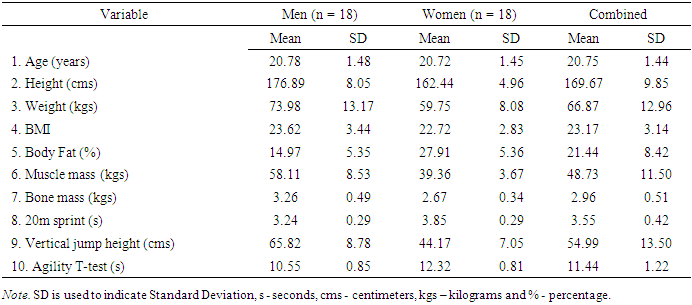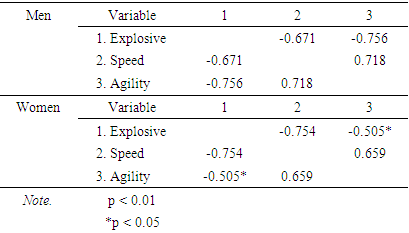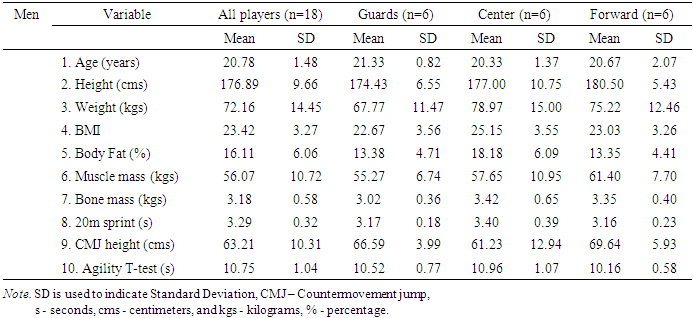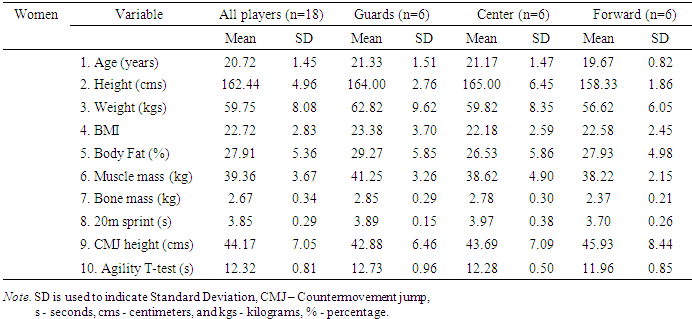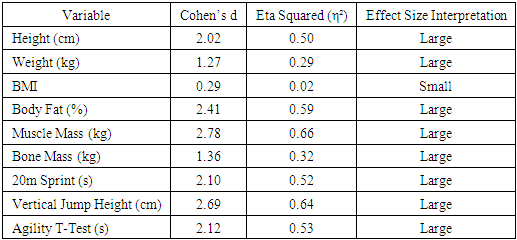| [1] | Ademović, I., Milenković, D., & Kocić, M. (2014, October 30). Agilnost I Eksplozivna Snaga Nogu Vertikalnog Tipa U Vrhunskoj Košarci (Agility And Explosive Leg Strength Of Vertical Type In Elite Basketball). |
| [2] | Alemdaroğlu, U. (2012). The relationship between muscle strength, anaerobic performance, agility, sprint ability and vertical jump performance in professional basketball players. Journal of Human Kinetics, 31, 149–158. https://doi.org/10.2478/v10078-012-0016-6. |
| [3] | Asadi, A. (2016). Relationship Between Jumping Ability, Agility and Sprint Performance of Elite Young Basketball Players: A Field-Test Approach. Brazilian Journal of Kinanthropometry and Human Performance, 18(2), 177. https://doi.org/10.5007/1980-0037.2016v18n2p177. |
| [4] | Ben Abdelkrim, N., Chaouachi, A., Chamari, K., Chtara, M., & Castagna, C. (2010). Positional role and competitive-level differences in elite-level men’s basketball players. Journal of Strength and Conditioning Research, 24(5), 1346–1355. https://doi.org/10.1519/JSC.0b013e3181cf7510. |
| [5] | Ben Abdelkrim, N., El Fazaa, S., & El Ati, J. (2007). Time–motion analysis and physiological data of elite under-19-year-old basketball players during competition. British Journal of Sports Medicine, 41(2), 69–75. https://doi.org/10.1136/bjsm.2006.032318. |
| [6] | Boone, J., & Bourgois, J. (2013). Morphological and physiological profile of elite basketball players in Belgian. International Journal of Sports Physiology and Performance, 8(6), 630–638. https://doi.org/10.1123/ijspp.8.6.630. |
| [7] | Bosco, C., Montanari, G., Ribacchi, R., Giovenali, P., Latteri, F., Iachelli, G., Faina, M., Colli, R., Dal Monte, A., & La Rosa, M. (1987). Relationship between the efficiency of muscular work during jumping and the energetics of running. European Journal of Applied Physiology and Occupational Physiology, 56(2), 138–143. https://doi.org/10.1007/BF00640636. |
| [8] | Brini, S., Boullosa, D., Calleja-González, J., & Delextrat, A. (2021). Construct Validity and Reliability of a New Basketball Multidirectional Reactive Repeated Sprint Test. International Journal of Environmental Research and Public Health, 18(20), 10695. https://doi.org/10.3390/ijerph182010695. |
| [9] | Bangsbo, J., Mohr, M., & Krustrup, P. (2006). Physical and metabolic demands of training and match-play in the elite football player. Journal of Sports Sciences, 24(7), 665–674. https://doi.org/10.1080/02640410500482529. |
| [10] | Chaouachi, A., Brughelli, M., Levin, G., Boudhina, N., Cronin, J., & Chamari, K. (2009). Anthropometric, physiological and performance characteristics of elite team-handball players. Journal of Sports Sciences, 27(2), 151–157. https://doi.org/10.1080/02640410802448731. |
| [11] | Cengi̇Zel, E., & Cengi̇Zel, Ç. Ö. (2022). Comparison of Physical and Motoric Characteristics by Playing Positions in Basketball. Gaziantep Üniversitesi Spor Bilimleri Dergisi, 7(4), 375–384. https://doi.org/10.31680/gaunjss.1173282. |
| [12] | Chaouachi, A., Brughelli, M., Chamari, K., Levin, G. T., Ben Abdelkrim, N., Laurencelle, L., & Castagna, C. (2009). Lower limb maximal dynamic strength and agility determinants in elite basketball players. Journal of Strength and Conditioning Research, 23(5), 1570–1577. https://doi.org/10.1519/JSC.0b013e3181a4e7f0. |
| [13] | Delextrat, A., & Cohen, D. (2008). Physiological Testing of Basketball Players: Toward a Standard Evaluation of Anaerobic Fitness. Journal of Strength and Conditioning Research, 22(4), 1066–1072. https://doi.org/10.1519/JSC.0b013e3181739d9b. |
| [14] | Drinkwater, E. J., Pyne, D. B., & McKenna, M. J. (2008). Design and Interpretation of Anthropometric and Fitness Testing of Basketball Players: Sports Medicine, 38(7), 565–578. https://doi.org/10.2165/00007256-200838070-00004. |
| [15] | Dellal, A., Wong, D. P., Moalla, W., & Chamari, K. (2010). Physical and technical activity of soccer goalkeepers during competitive matches. Journal of Sports Sciences, 28(9), 937–944. https://doi.org/10.1080/02640414.2010.495246. |
| [16] | Erčulj, F., Blas, M., & Bračič, M. (2010). Physical demands on young elite European female basketball players with special reference to speed, agility, explosive strength, and take-off power. Journal of Strength and Conditioning Research, 24(11), 2970–2978. https://doi.org/10.1519/JSC.0b013e3181e38107. |
| [17] | Ferioli, D., Rampinini, E., Bosio, A., La Torre, A., Azzolini, M., & Coutts, A. J. (2018). The physical profile of adult male basketball players: Differences between competitive levels and playing positions. Journal of Sports Sciences, 36(22), 2567–2574. https://doi.org/10.1080/02640414.2018.1469241. |
| [18] | Gabbett, T. J., Jenkins, D. G., & Abernethy, B. (2008). Physical demands of professional rugby league training and competition. Journal of Strength and Conditioning Research, 22(3), 626–639. https://doi.org/10.1519/JSC.0b013e31816a5c8e. |
| [19] | Hoare, D. G. (2000). Predicting success in junior elite basketball players--the contribution of anthropometric and physiological attributes. Journal of Science and Medicine in Sport, 3(4), 391–405. https://doi.org/10.1016/s1440-2440(00)80006-7. |
| [20] | Ivanović, J., Kukić, F., Greco, G., Koropanovski, N., Jakovljević, S., & Dopsaj, M. (2022). Specific Physical Ability Prediction in Youth Basketball Players According to Playing Position. International Journal of Environmental Research and Public Health, 19(2), 977. https://doi.org/10.3390/ijerph19020977. |
| [21] | Karastergiou, K., Smith, S. R., Greenberg, A. S., & Fried, S. K. (2012). Sex differences in human adipose tissues – the biology of pear shape. Biology of Sex Differences, 3(1), 13. https://doi.org/10.1186/2042-6410-3-13. |
| [22] | Köklü, Y., Alemdaroğlu, U., Koçak, F., Erol, A., & Fındıkoğlu, G. (2011). Comparison of Chosen Physical Fitness Characteristics of Turkish Professional Basketball Players by Division and Playing Position. Journal of Human Kinetics, 30(2011), 99–106. https://doi.org/10.2478/v10078-011-0077-y. |
| [23] | Kryeziu, A.R., & Asllani, I. (2017). The structure of morphological characteristics and basic motor skills of the typical game of basketball junior. |
| [24] | Liang, Y., Abbott, D., Howard, N., Lim, K., Ward, R., & Elgendi, M. (2019). How Effective Is Pulse Arrival Time for Evaluating Blood Pressure? Challenges and Recommendations from a Study Using the MIMIC Database. Journal of Clinical Medicine, 8(3), 337. https://doi.org/10.3390/jcm8030337. |
| [25] | McInnes, S. E., Carlson, J. S., Jones, C. J., & McKenna, M. J. (1995). The physiological load imposed on basketball players during competition. Journal of Sports Sciences, 13(5), 387–397. https://doi.org/10.1080/0264041950873225. |
| [26] | McKenzie Gillam, G. (1985). Basketball: Identification of anthropometric and physiological characteristics relative to participation in college basketball. National Strength & Conditioning Association Journal, 7(3), 34. https://doi.org/10.1519/0744-0049(1985)007<0034:IOAAPC>2.3.CO;2. |
| [27] | Meylan, C., Cronin, J., Oliver, J., Hopkins, W., & Pinder, S. (2014). Contribution of Vertical Strength and Power to Sprint Performance in Young Male Athletes. International Journal of Sports Medicine, 35(09), 749–754. https://doi.org/10.1055/s-0033-1363191. |
| [28] | Mitić, M., Paunović, M., Živković, M., Stojanović, N., Bojić, I., & Kocić, M. (2019). Differences In Agility And Explosive Power Of Basketball Players In Relation To Their Positions On The Team. Facta Universitatis, Series: Physical Education and Sport, 16(2), 739. |
| [29] | Markovic, G. (2010). Does plyometric training improve vertical jump height? A meta-analytical review. British Journal of Sports Medicine, 44(12), 875–883. https://doi.org/10.1136/bjsm.2009.061747. |
| [30] | Pehar, M., Sekulic, D., Sisic, N., Spasic, M., Uljevic, O., Krolo, A., Milanovic, Z., & Sattler, T. (2017). Evaluation of different jumping tests in defining position-specific and performance-level differences in high level basketball players. Biology of Sport, 3, 263–272. https://doi.org/10.5114/biolsport.2017.67122. |
| [31] | Pojskić, H., Šeparović, V., Užičanin, E., Muratović, M., & Mačković, S. (2015). Positional Role Differences in the Aerobic and Anaerobic Power of Elite Basketball Players. Journal of Human Kinetics, 49(1), 219–227. https://doi.org/10.1515/hukin-2015-0124. |
| [32] | Reilly, T., Williams, A. M., Nevill, A., & Franks, A. (2000). A multidisciplinary approach to talent identification in soccer. Journal of Sports Sciences, 18(9), 695–702. https://doi.org/10.1080/02640410050120078. |
| [33] | Ribeiro, B., Mota, H. R., Jorge, F., Morales, A., & Leite, T. C. (2015). Correlation between body composition and the performance of vertical jumps in basketball players. 18, 69–78. |
| [34] | Rodríguez-Alonso, M., Fernández-García, B., Pérez-Landaluce, J., & Terrados, N. (2003). Blood lactate and heart rate during national and international women’s basketball. The Journal of Sports Medicine and Physical Fitness, 43(4), 432–436. |
| [35] | Sallet, P., Perrier, D., Ferret, J. M., Vitelli, V., & Baverel, G. (2005). Physiological differences in professional basketball players as a function of playing position and level of play. The Journal of Sports Medicine and Physical Fitness, 45(3), 291–294. |
| [36] | Sansone, P., Makivic, B., Csapo, R., Hume, P., Martínez-Rodríguez, A., & Bauer, P. (2022). Body Fat of Basketball Players: A Systematic Review and Meta-Analysis. Sports Medicine - Open, 8(1), 26. https://doi.org/10.1186/s40798-022-00418-x. |
| [37] | Scanlan, A. T., Dascombe, B. J., Kidcaff, A. P., Peucker, J. L., & Dalbo, V. J. (2015). Gender-Specific Activity Demands Experienced During Semiprofessional Basketball Game Play. International Journal of Sports Physiology and Performance, 10(5), 618–625. https://doi.org/10.1123/ijspp.2014-0407. |
| [38] | Schelling, X., & Torres-Ronda, L. (2013). Conditioning for Basketball: Quality and Quantity of Training. Strength & Conditioning Journal, 35(6), 89–94. https://doi.org/10.1519/SSC.0000000000000018. |
| [39] | Sekulic, D., Pehar, M., Krolo, A., Spasic, M., Uljevic, O., Calleja-González, J., & Sattler, T. (2017). Evaluation of Basketball-Specific Agility: Applicability of Preplanned and Nonplanned Agility Performances for Differentiating Playing Positions and Playing Levels. Journal of Strength and Conditioning Research, 31(8), 2278–2288. https://doi.org/10.1519/JSC.0000000000001646. |
| [40] | Shalfawi, S. A. I., Sabbah, A., Kailani, G., Tønnessen, E., & Enoksen, E. (2011). The relationship between running speed and measures of vertical jump in professional basketball players: a field-test approach. Journal of Strength and Conditioning Research, 25(11), 3088–3092. https://doi.org/10.1519/JSC.0b013e318212db0e. |
| [41] | Stankovic, M., Lazić, A., Milenković, D., Nurkić, F., Kocic, M., (2022). Motoric Abilities of Basketball Players According to Different Ranks of Competition and Playing Positions. Sport Mont, 20(2), 11–16. https://doi.org/10.26773/smj.220602. |
| [42] | Stojanovic, M. D., Ostojic, S. M., Calleja-González, J., Milosevic, Z., & Mikic, M. (2012). Correlation between explosive strength, aerobic power and repeated sprint ability in elite basketball players. The Journal of Sports Medicine and Physical Fitness, 52(4), 375–381. |
| [43] | Suarez-Arrones, L., Gonzalo-Skok, O., Carrasquilla, I., Asián-Clemente, J., Santalla, A., Lara-Lopez, P., & Núñez, F. J. (2020). Relationships between Change of Direction, Sprint, Jump, and Squat Power Performance. Sports (Basel, Switzerland), 8(3), 38. https://doi.org/10.3390/sports8030038. |
| [44] | Vaquera, A., Santos, S., Villa, J. G., Morante, J. C., & García-Tormo, V. (2015). Anthropometric Characteristics of Spanish Professional Basketball Players. Journal of Human Kinetics, 46(1), 99–106. https://doi.org/10.1515/hukin-2015-0038. |
| [45] | Verstegen, M., & Marsello, B.; Agility and coordination. In B. Foran (Ed.), High performance sports conditioning. Champaign, IL: Human Kinetics: 139-165, 2001. (n.d.). Retrieved July 30, 2024, from https://www.sciepub.com/reference/175250. |
| [46] | Vescovi, J. D., & Mcguigan, M. R. (2008). Relationships between sprinting, agility, and jump ability in female athletes. Journal of Sports Sciences, 26(1), 97–107. https://doi.org/10.1080/02640410701348644. |
| [47] | Young, W., Cormack, S., & Crichton, M. (2011). Which jump variables should be used to assess explosive leg muscle function? International Journal of Sports Physiology and Performance, 6(1), 51–57. https://doi.org/10.1123/ijspp.6.1.51. |
| [48] | Young, W., & Farrow, D. (2006). A review of agility: Practical applications for strength and conditioning. Strength and Conditioning Journal, 28(5), 24–29. https://doi.org/10.1519/00126548-200610000-00004. |



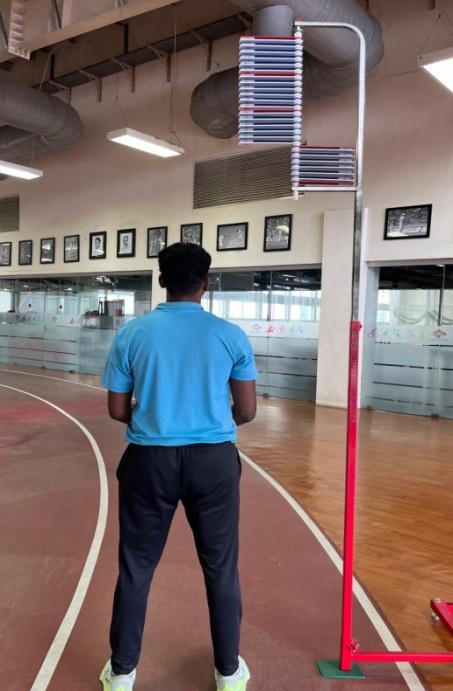
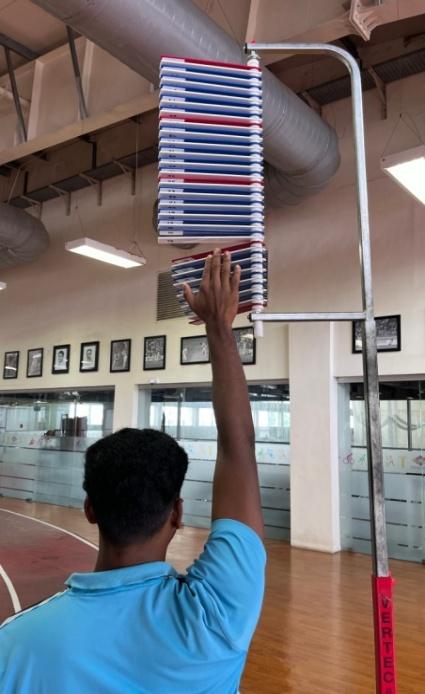
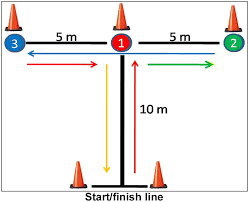
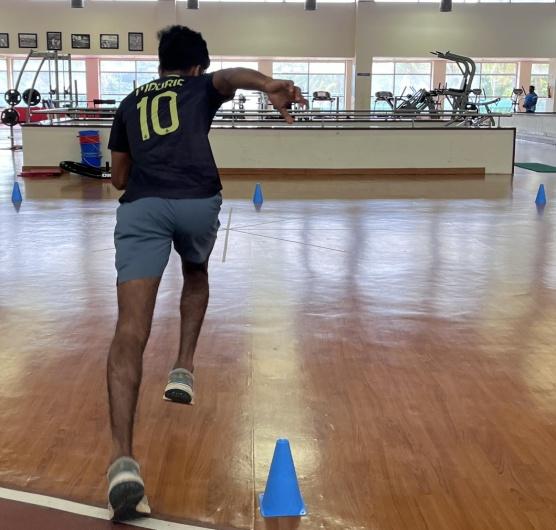
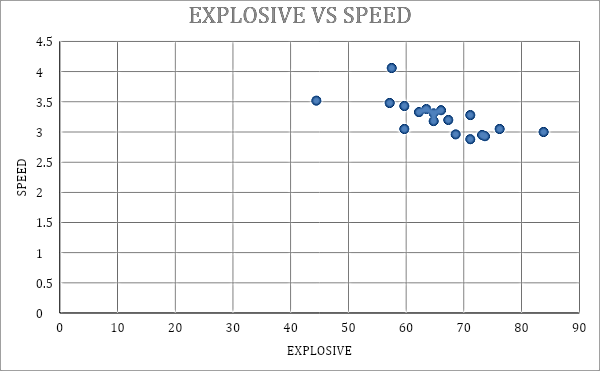
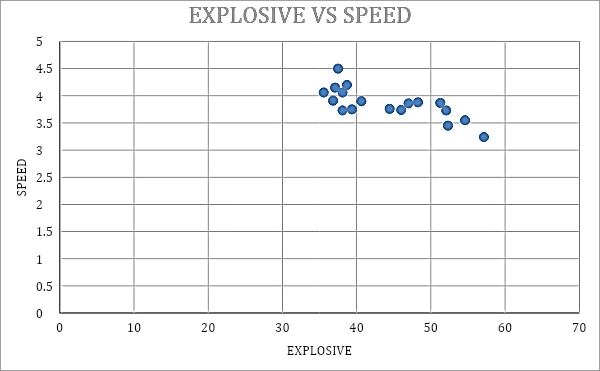
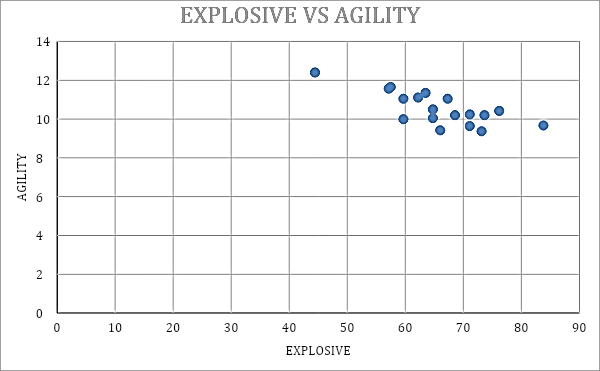
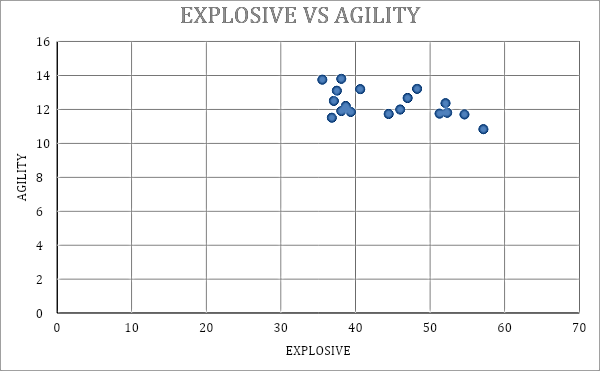
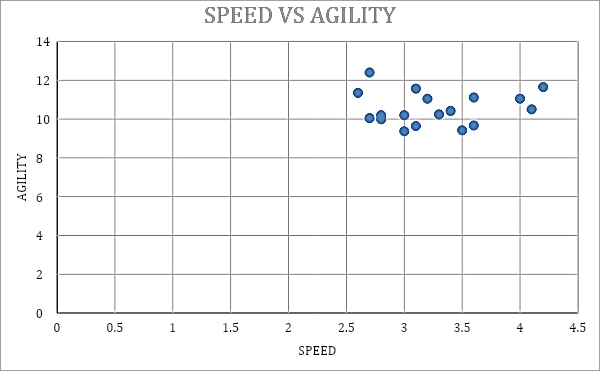
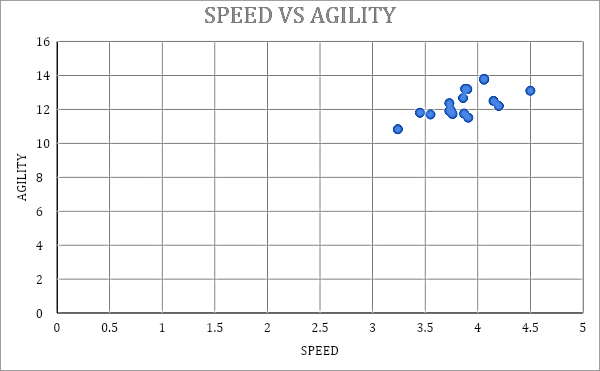
 Where:• M1, M2M_1, M_2 are the means of two groups (Men and Women)• SD1, SD2SD_1, SD_2 are the standard deviations of two groupsEta Squared (η²) Formula:
Where:• M1, M2M_1, M_2 are the means of two groups (Men and Women)• SD1, SD2SD_1, SD_2 are the standard deviations of two groupsEta Squared (η²) Formula: Where d is Cohen’s d.Effect Size Estimates for Key Variables
Where d is Cohen’s d.Effect Size Estimates for Key Variables Abstract
Abstract Reference
Reference Full-Text PDF
Full-Text PDF Full-text HTML
Full-text HTML